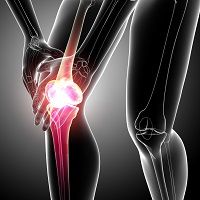Article
New Injection Could Offer Improved Pain Relief for Knee Replacement Patients
Author(s):
For patients diagnosed with knee osteoarthritis the pain associated not only with the condition but also the potential knee replacement surgery can be excruciating. A recent study looked at ways to minimize the pain after the operation to get people back on their feet as quickly as possible.

For patients diagnosed with knee osteoarthritis the pain associated not only with the condition but also the potential knee replacement surgery can be excruciating. A recent study looked at ways to minimize the pain after the operation to get people back on their feet as quickly as possible.
According to researchers at Henry Ford Hospital, a new medicine called liposomal bupivacaine that is injected into tissue around the knee during surgery can provide much-needed relief.
“The pain scores for this injection technique average about 3/10, which is similar to the pain scores seen with our traditional method,” noted Jason Davis, MD, in a statement from Henry Ford Hospital. “Patients had pain relief for up to two days after surgery and better knee function compared with the traditional method.”
The news statement reported that from 1993 to 2009 the number of knee replacement surgeries tripled, thanks in large part to factors ranging from arthritis to patients being overweight and obese. As a result of the operation, the statement noted, more than 90% of replacements have a shelf life of at least 15 years.
The study involved 216 patients who underwent the procedure from October 2012 to September 2013. Of that group, half were given the “traditional” treatment option of a continuous femoral nerve blockade. Davis said while this is the usual option, “Pain control came at a price of weakness and made patients somewhat tentative during their hospital stay.”
For those who received the newer medication, Davis said they were able to walk just hours after the operation was done. By using this method to manage pain after surgery, Davis reported, “Function-wise, it was a lot easier for patients to move around more confidently.” He added, “In the past decade we’ve made major advancements in pain control for knee replacement surgery.
This option is a promising, viable one for our patients.”





